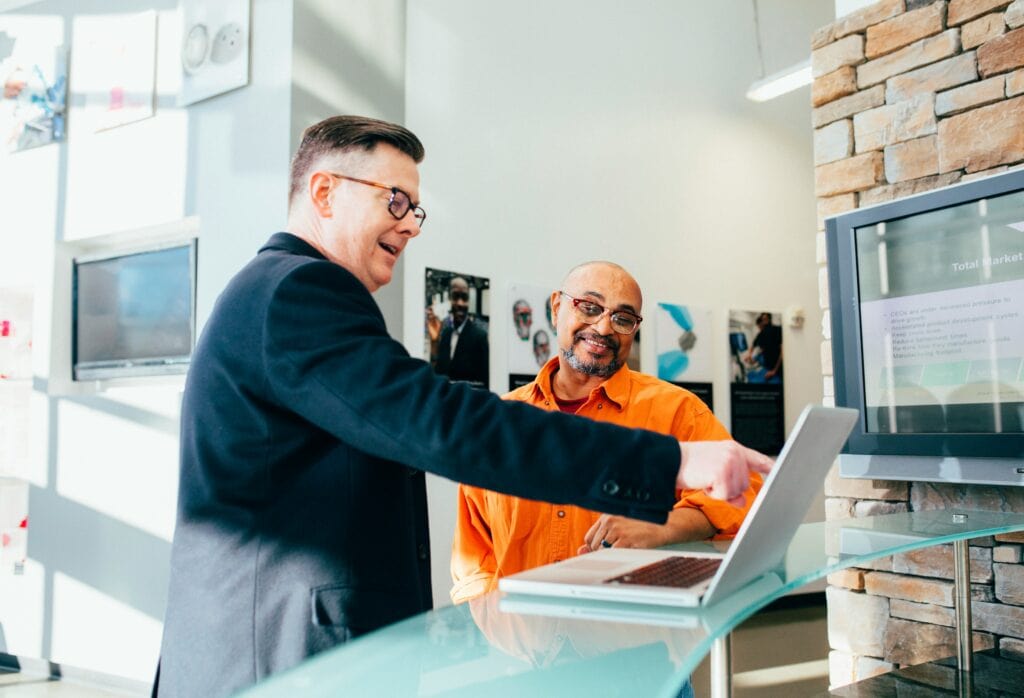
the emotional architecture of learning:
Learning isn’t remembered because of the content alone. It’s remembered because of how it feels. Great design moves people through a rhythm of emotions, a sequence that anchors knowledge in memory and makes change possible. We’ve dug into our expertise to highlight six of the key emotional beats every learning journey needs to follow.
1. anticipation: “I want to know more.”
The first beat is about sparking curiosity. Neuroscience tells us that curiosity primes the brain for learning, a study in Neuron found that when curiosity is piqued, activity increases in the hippocampus (the memory centre of the brain). That’s why we design openings that surprise, intrigue or challenge assumptions. Whether it’s a story hook, a provocative stat, or a problem learners can’t resist solving, anticipation is the spark that fuels attention.
2. recognition – “This is about me.”
Before learners engage, they need to see themselves reflected in the content. Gallup reports that 74% of employees feel training isn’t directly relevant to their role, and that disconnect kills engagement. Recognition means tailoring scenarios, language, and examples to the learner’s context. It’s not generic. It’s designed to make people think, this is about me, my work, my challenges. When people recognise themselves in learning, they stop watching passively and start caring.
3. resonance – “This connects with what I value.”
Relevance gets attention, but resonance creates meaning. This is where we link content to deeper drivers, identity, pride, belonging, purpose. Deloitte’s research shows that purpose-driven workers are 5x more engaged in their roles. In practice, resonance is built through storytelling, empathy, and context. It’s the difference between “here’s how to follow a process” and “here’s how this process protects the people you serve.” It moves learning from useful to meaningful.
4. challenge – “Can I rise to this?”
Humans are wired to grow through tension. A study by Mihaly Csikszentmihalyi on flow states shows that challenge, balanced with ability, leads to deep engagement and satisfaction. We design challenges that stretch without overwhelming. This might be a branching scenario, a role-play exercise, or a decision under pressure. The point isn’t to test memory, it’s to test judgment and spark confidence when learners prove to themselves they can rise to it.
5. resolution – “Now I get it.”
Every good story has resolution, and so should every piece of learning. This is the moment where uncertainty transforms into insight. Studies in educational psychology show that “aha!” moments are powerful anchors in long-term memory. We build for them by closing loops set up earlier: the mystery solved, the problem cracked, the skill unlocked. Resolution gives the learner a sense of clarity, confidence, and mastery.

6. momentum – “I know what to do next.”
The final beat is about sustaining change beyond the module. Too often, learning ends with completion. The real impact happens when learning creates momentum — clear, practical actions learners can take right away. Research from the Journal of Applied Psychology found that training with follow-up activities increases transfer of learning to the job by 45%. That’s why we always close with reflection prompts, action planning, or behaviour nudges that turn knowledge into lived practice.
why it matters
These six emotional beats aren’t just theory. They’re the craft of learning design. Miss them, and content risks fading into noise. Hit them, and you create experiences that learners remember, share, and actually use. At Mindboost, this emotional rhythm underpins everything we design, from platforms to digital modules, from leadership programmes to live workshops. Because obliterating dull, click-next eLearning isn’t just about style. It’s about creating learning that feels alive, relevant, and transformative.
ready to revolutionise your learning experience?
When you partner with mindboost and our alliance of revolutionary organisations, you’re joining a movement that believes every human being deserves to discover their greatness.




